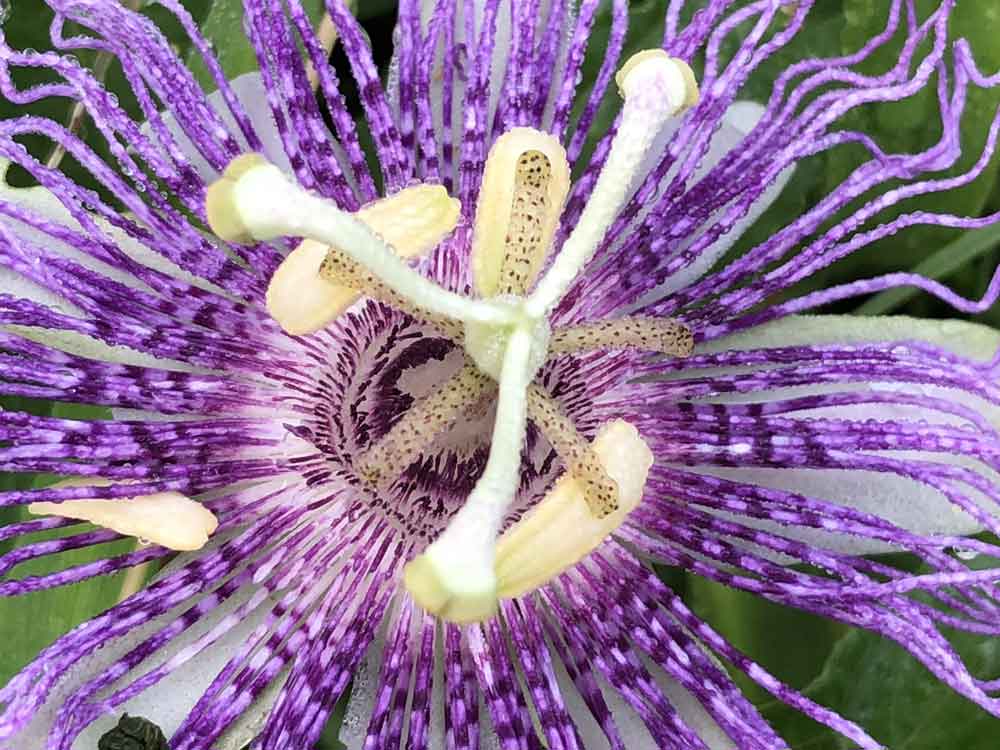About Passiflora
Passiflora mollissima is generally a subtropical to tropical vine. It thrives in zones 10 to 12 with a minimum cold hardiness of 28°F and is commonly found in the Andes at elevations of 6000 to 7000 feet. This fast-growing vine, climbing 20 to 25 feet, typically starts producing fruits by the second year and can yield up to 300 fruits per vine when in full production. Its striking red-pink flowers grow at the ends of long stalks and may attract hummingbirds.
Passiflora has received the Royal Horticultural Society’s Award of Garden Merit (AGM) for its exceptional qualities in garden cultivation. This recognition attests to its suitability as a garden plant.
When to Plant Passiflora Seeds
The optimal time to plant Passiflora is during late winter or early spring.
Where to Plant Passiflora Seeds
This vine flourishes in subtropical and warm-temperate regions. In tropical areas, it often thrives at higher elevations but can adapt to various climates. Passiflora is hardy to temperatures in the mid-20°F range. In colder areas, it may defoliate or die back but will regrow from the roots.
How to Plant Passiflora Seeds
Before planting, we recommend soaking seeds for 24 to 48 hours to encourage germination. Learn more about soaking seeds here.
Passiflora is typically grown from seeds but can also be propagated from cuttings. For seed germination, it is recommended to provide bottom heat at temperatures of 70°F to 80°F, resulting in germination anywhere from one to six weeks. At lower temperatures, germination can take anywhere from 10 weeks to 12 months.
Pretreatment of passiflora seeds is essential due to their hard seed coat and slow sprouting nature. The simplest pretreatment method involves soaking the seeds in warm water for 24 to 48 hours just before planting. Optionally, seeds can be lightly scarified with sandpaper to enhance seed coat permeation.
Plant pretreated seeds one inch deep in moist, sterile soil. Maintain soil temperature consistently between 70°F to 85°F, with some day-to-day variation in this range. Cool soils can significantly delay or inhibit germination.
Estimated germination time under optimal conditions ranges from six weeks to six months, with some seeds taking up to 12 months to sprout. When planting outside, ensure that you leave at least 24 to 36 inches between each seed or seedling.
How to Care for Passiflora
To ensure the best results, water your Passiflora well and keep the soil consistently moist, but not wet or soggy. This will help your plants produce a healthy, uniform crop.
The edible fruits can be enjoyed fresh or used as flavoring for drinks. They are commonly used in South America to enhance the flavor of ice creams, beverages, and cocktails. The plants produce a yellow, oval shaped passion fruit with bright yellow skin and orange pulp that is very tasty!
The plant is native to scrub-land regions of Central Brazil. While it is regionally popular, it is not extensively cultivated. In certain climates, particularly those with higher rainfall, Passiflora has invasive potential. It has become widespread in parts of South Africa, Asia, and upper elevation areas of several Pacific islands, including Hawaii. In these regions, it can smother native vegetation, as its fruits and seeds are spread by birds, feral pigs, and humans. In cooler climates with yearly frost, the vine is more manageable and serves as a beautiful garden ornamental.




